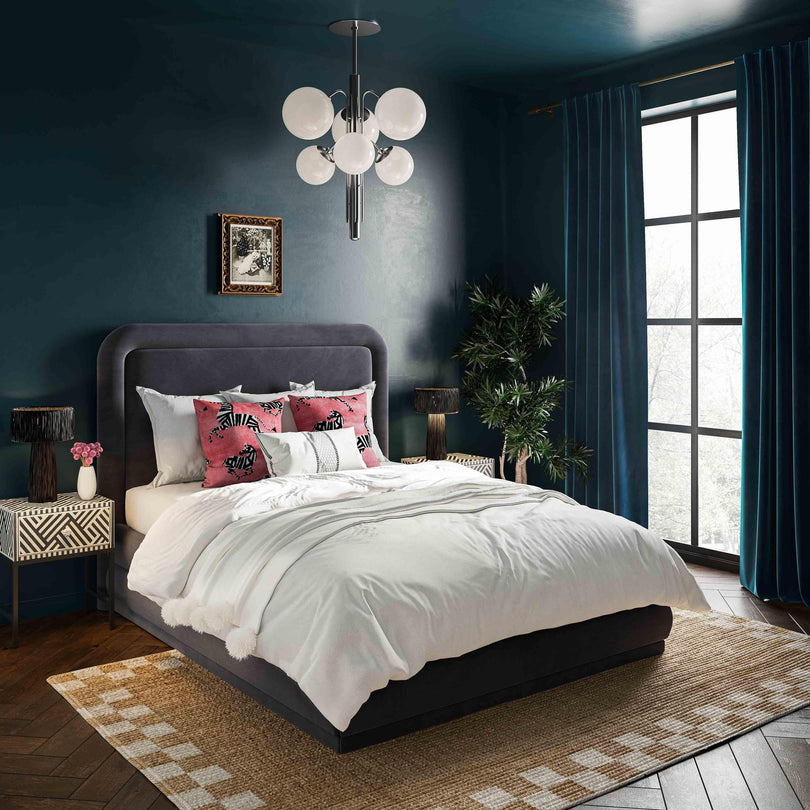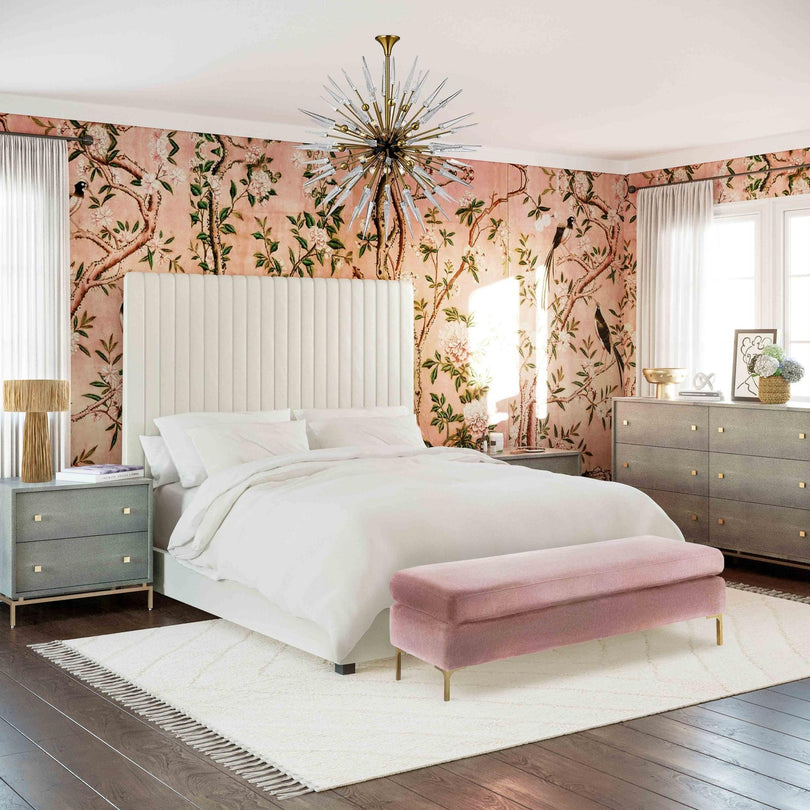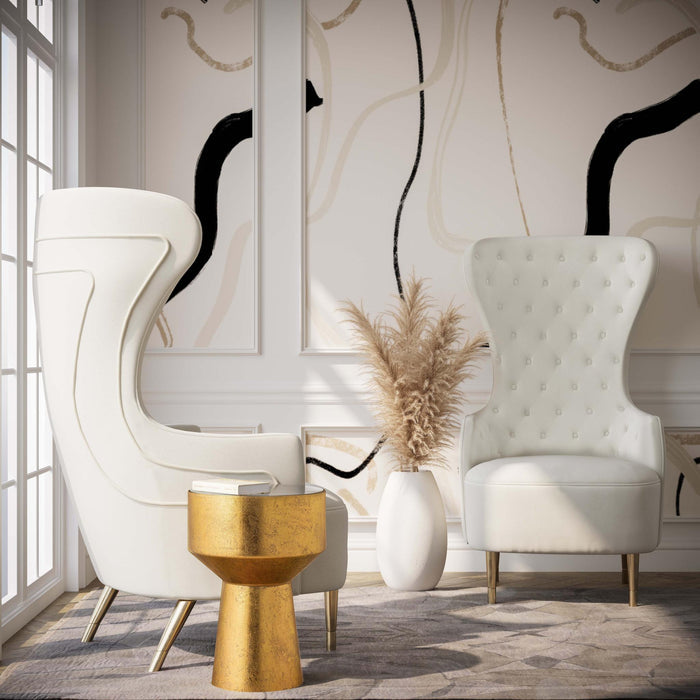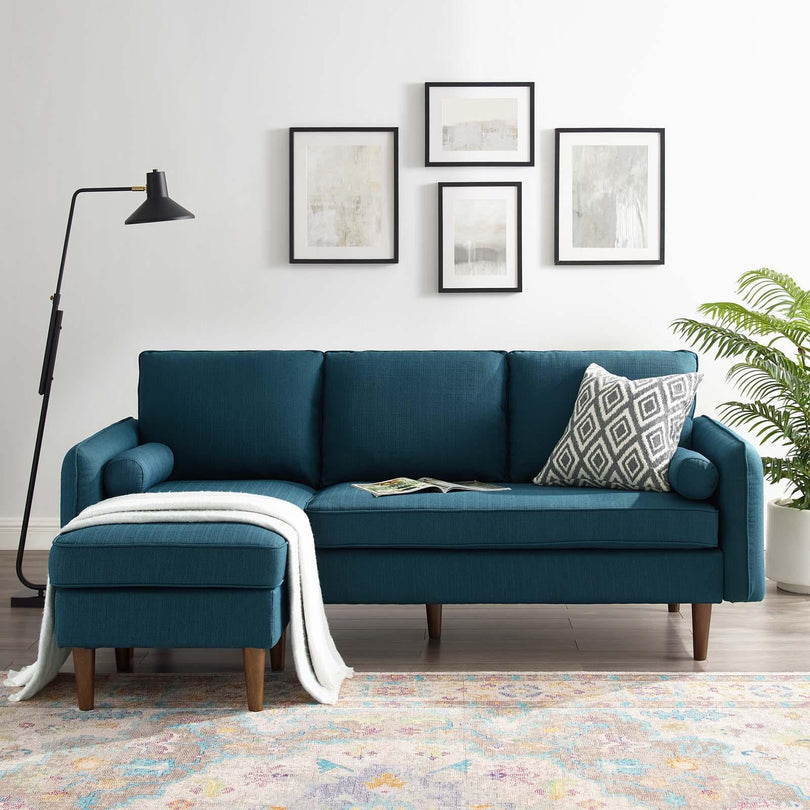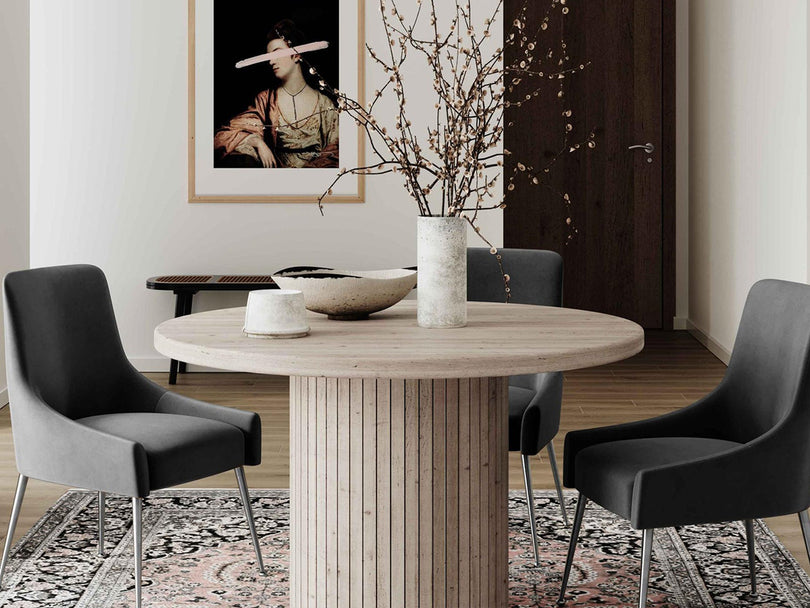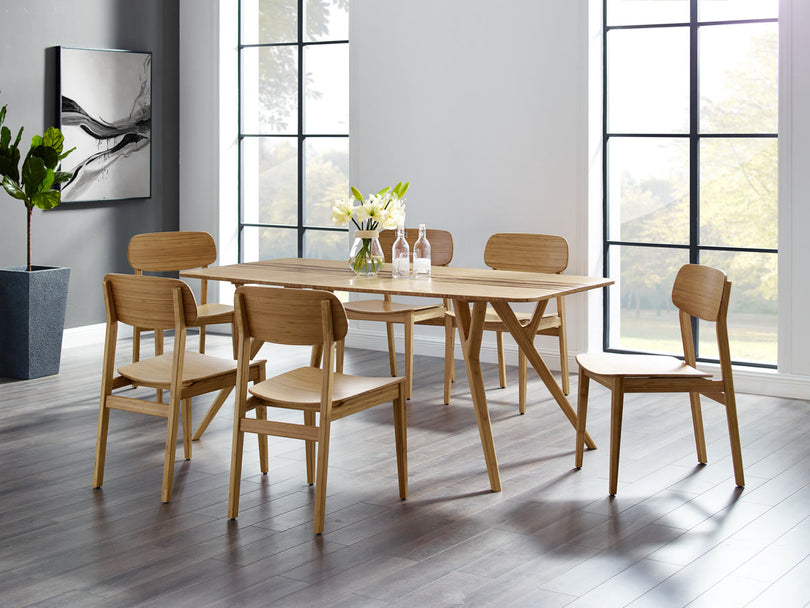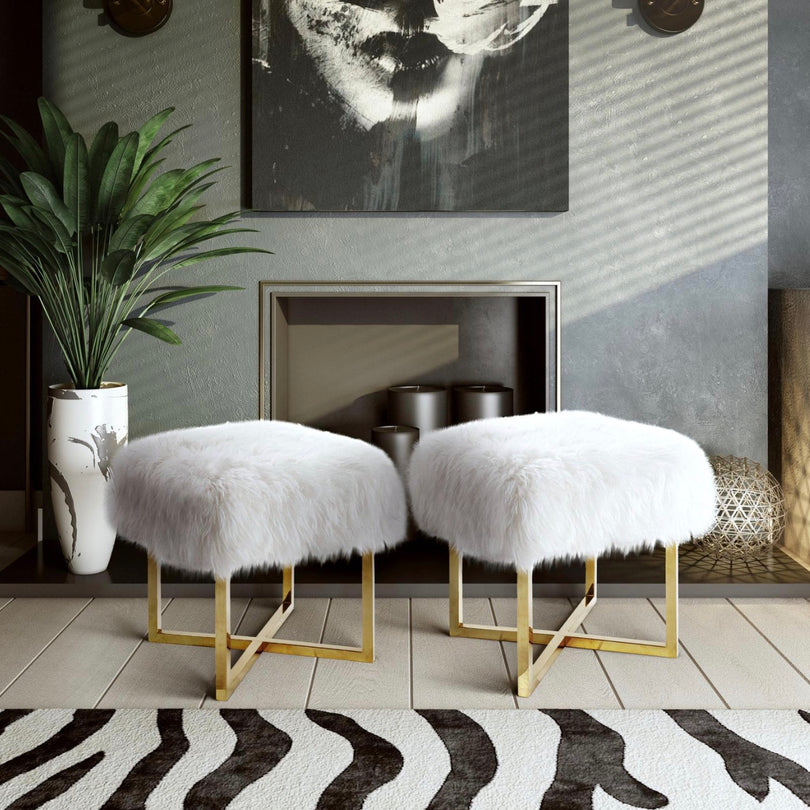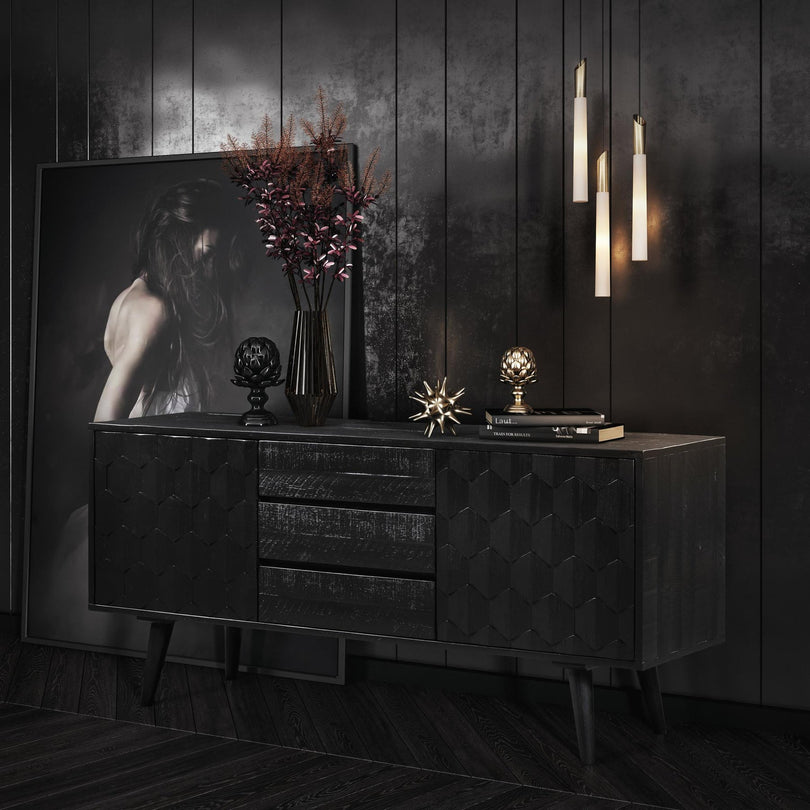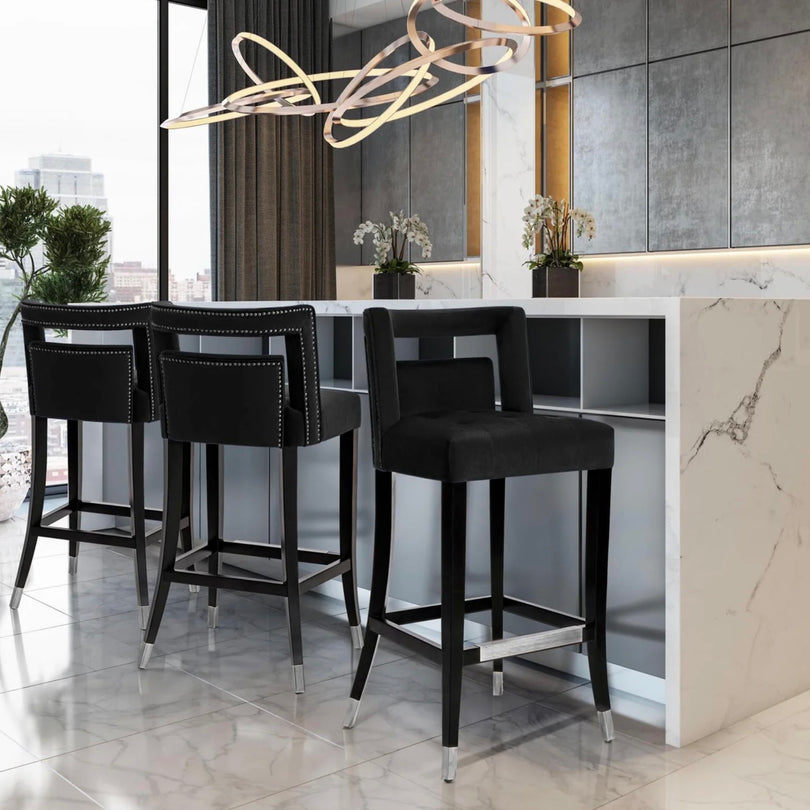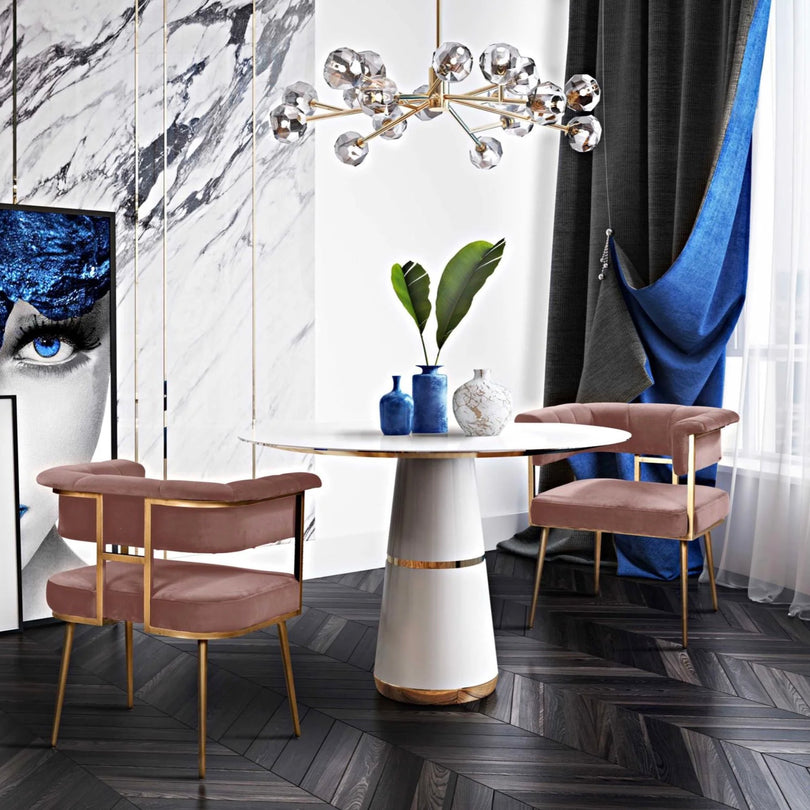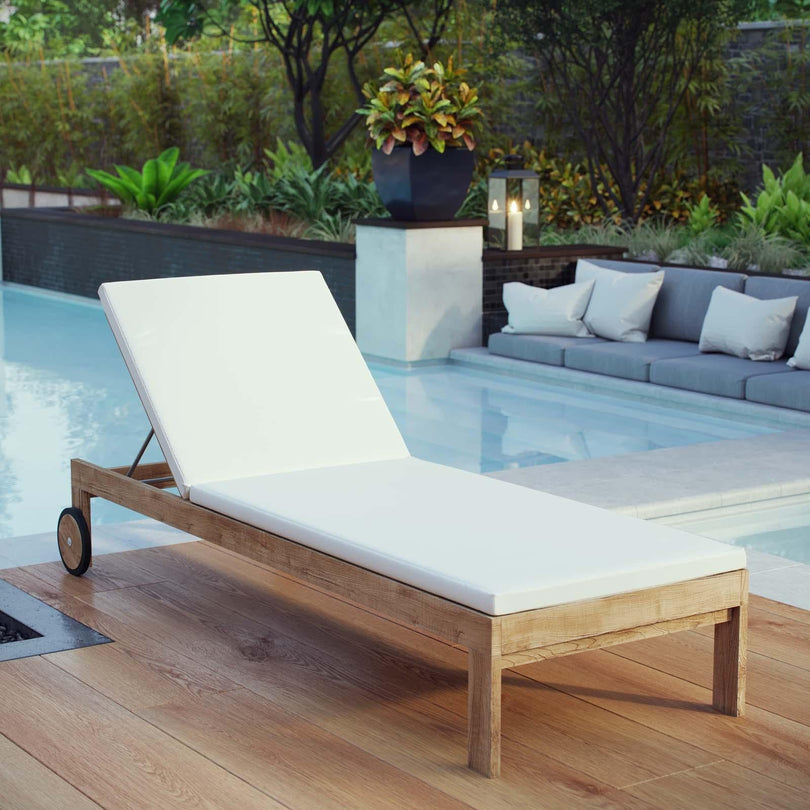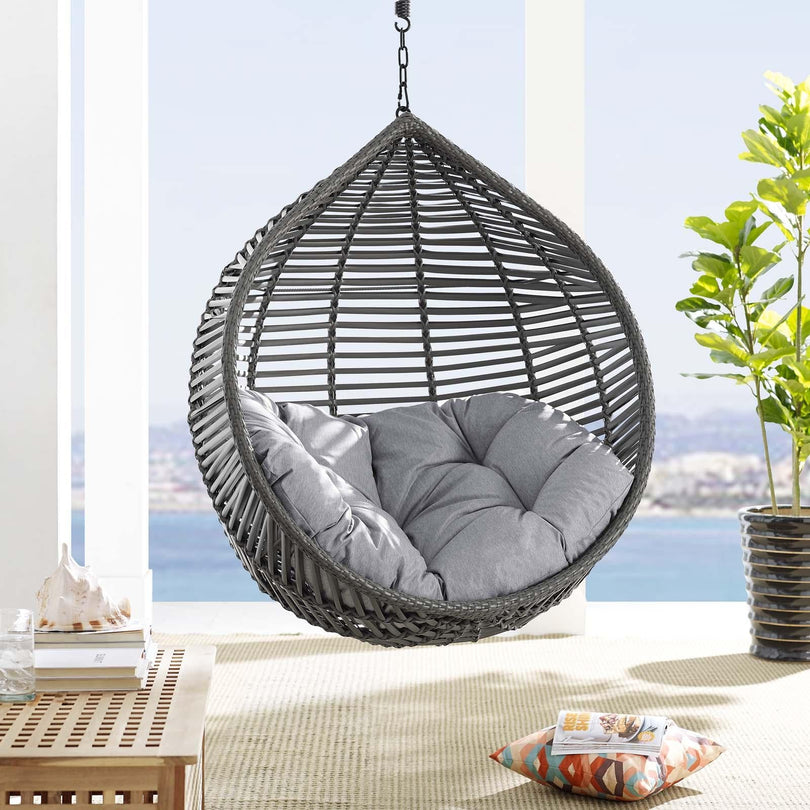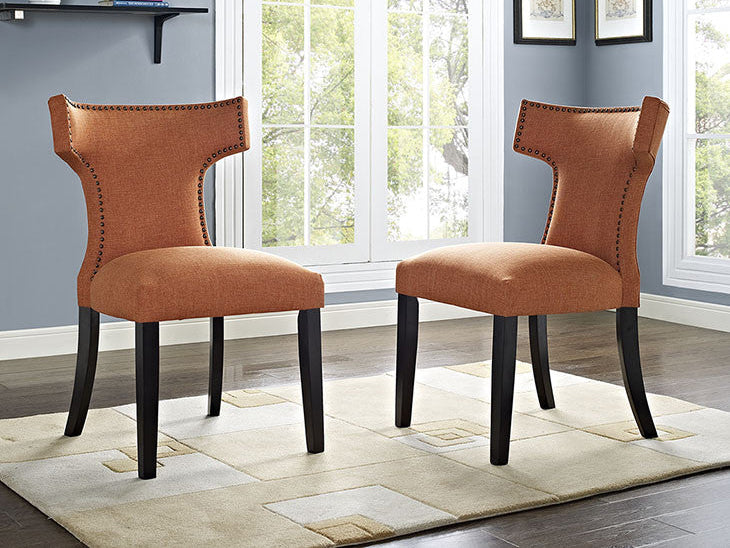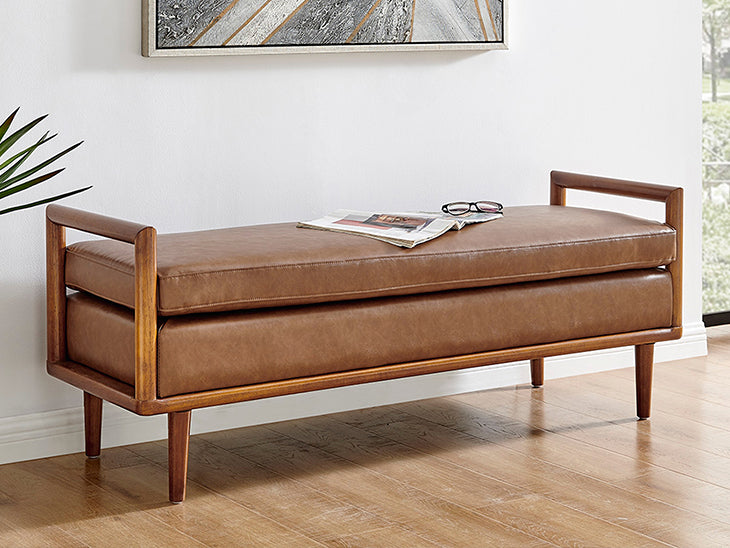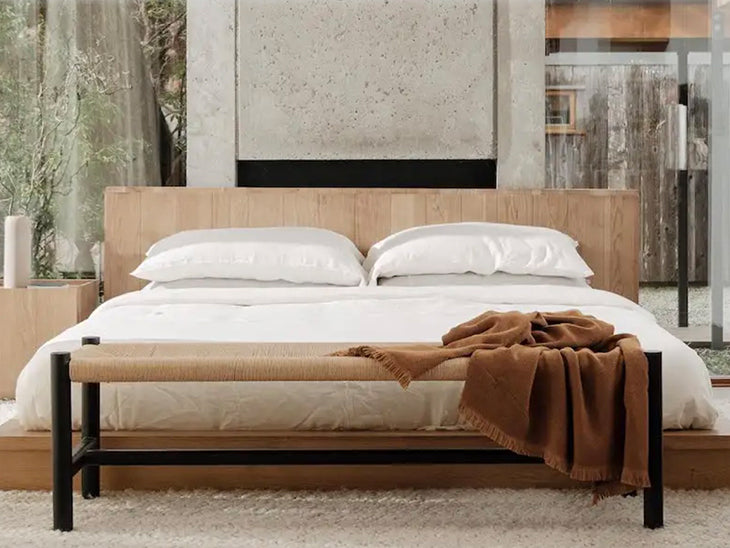Escaping the chaotic clutter of everyday life and finding tranquility in our own personal spaces has never been more essential. Minimalist furniture design offers just that: a tranquil aesthetic that transforms our homes into serene, inviting havens. This design philosophy, defined by simplicity and functionality, places emphasis on a "less is more" approach. But don't let these streamlined designs fool you into believing they lack any depth or character. On the contrary, minimalist furniture is all about focussing on the essentials and ditching the unnecessary, allowing the pieces to breathe in a symbiotic relationship with their surrounding environment.
As we step into 2024, emerging trends are reshaping the realm of minimalist design. But amidst all the styles, cuts, and color palettes, how can you navigate this sea of possibilities? Whether you’re an interior enthusiast seeking a fresh perspective or a seasoned professional designer in search of design inspiration, this handbook will shine a spotlight on the latest trends, tips, and considerations in selecting the perfect minimalist furniture for your space. Let's dive in and unlock the aesthetic potential minimalist design holds for us.
Trends in Minimalist Furniture Design for 2024
When we talk about interior design trends, minimalist furniture has often sat comfortably in the spotlight, embracing simplicity while radiating functionality and style. This year, 2024, marks another shift in the dynamic world of interior design. Many of us have a growing interest in creating serene livable spaces that offer comfort, practicality, and a healthy dose of aesthetic appeal.
Scandinavian-inspired designs
Nordic aesthetics keep their place in the limelight with Scandinavian-inspired furniture leading the trend list. These designs, with their clean lines and organic textures, fuse comfort and minimalist elegance in a charming blend that makes every space feel like a breath of fresh air.
Multifunctional and Modular Furniture
Functionality takes center stage in 2024. The drive for space efficiency has led to a wave of multifunctional and modular furniture designs. These versatile pieces facilitate smart living by adjusting to different needs and space constraints.
Warm Neutrals
The color palette this year leans toward warm neutrals. Think shades of beige, taupe, and soft terracotta offering a cozy, grounded feel that makes a room inviting and light.
Revival of Post-COVID Social Spaces
As we recover from the global pandemic, our homes have become more social hubs than mere living spaces. Furniture trends align with this change, creating multi-purpose rooms that cater to various activities - work, relaxation, and socializing.
Minimal Lux
Another predominant trend is Minimal Lux, a sophisticated blend of minimalism and luxury that captures the essence of less is more while still adding a touch of opulence.
Rise of Maximalism
In contrast to minimalism, maximalism is also making waves. This style breaks all boundaries with its rich textures, bold colors, and intricate patterns, allowing individuals to express their personality without restraint.
Darker Wood Finishes and Vintage Twist
The trend is swinging away from light-colored wood towards darker wood finishes - mahogany, walnut, and teak. The warm and rich hues paired with vintage designs give spaces a timeless, classy appeal.
Bold looks and Individuality
People are not afraid to express their individuality in 2024. Bold color schemes, layered color applications, and strategic blending of shades are all part of this year's minimalist furniture trends.
Curved Silhouettes and Organic Shapes
Sharp corners and rigid lines are making way for softer forms. Curved silhouettes and organic shapes offer a fluid aesthetic that brings an inviting, calming presence.
Nature-inspired Materials
Last but not least, nature has a significant influence on furniture designs. Biophilic design elements are prominent, with materials such as bamboo, rattan, and wood leading the way, breaking up the monotony of man-made materials.
For a more detailed exploration of the Minimalist Furniture Trends in 2024, don't hesitate to check out our full article where we delve deeper into each trend.
Keeping an eye on the shifting tides of design allows us to be ahead of the curve. And who knows? Your ideal interior design may dovetail perfectly with one of the trends highlighted above. Whether you lean toward minimal simplicity or bold maximalism, this year has something exciting to offer!
Choosing Minimalist Furniture Pieces
As we transition into a world embracing simplicity and harmony, minimalism becomes undeniably appealing. One significant area where this concept takes center stage is in our living spaces. Not only does minimalist furniture amplify aesthetics, but it also promotes a tranquil and organized environment. In this regard, let's delve into the art of Choosing Minimalist Furniture focusing on aspects such as quality, color, materials, functionality, proportionality, decluttering, strategic layouts, and sustainability.
Quality Over Quantity
In the minimalist design philosophy, it's always about the quality rather than quantity. This dictates the rule, 'less is more.' By opting for fewer, well-made furniture pieces, you not only reduce clutter but also invest in long-term use. Accents should focus on timeless designs that effortlessly blend into the interior while also standing the test of time.
Neutral Colors
Minimalism emphasizes clean lines, uncluttered spaces, and a neutral color palette. Furnitures in shades of white, grey, beige, or earth tones typically embody minimalism, appearing airy and offering an illusion of spaciousness. Such a palette is soothing to the eyes and infuses the home with calm energy, essential for relaxation and rejuvenation.
Furniture Made from Natural Materials
Minimalist furniture thrives on simplicity, with nature-inspired materials like wood, stone, and rattan being widely used. These pieces not only enrich visual texture but also bring a touch of the outdoors to the indoors. However, the key is to keep a balance, ensuring the space doesn't feel overwhelmed by too many textures or materials.
Functional Furniture
Functionality overrides aesthetics when it comes to minimalist furniture. Each item should serve a purpose, saving space and minimizing clutter. In essence, this design approach values utility, prioritizing multifunctional pieces that can serve multiple roles and incorporate storage solutions.
Proportionality
Another key element of minimalist design is proportionality. Furniture pieces should respect the room's dimensions, ensuring the space maintains a harmonious balance. A minimalist room is never overcrowded - instead, it offers adequate space for movement around each piece of furniture.
Declutter your Dining Room
In minimalist design, less is definitely more. Particularly in your dining room, avoiding unnecessary elements helps to maintain a clean and serene environment. A simple and practical dining table, paired with comfortable dining chairs is the perfect minimalist combination.
Strategic Layouts
A well-thought-out layout is a cornerstone of minimalist interior design. The layout should allow easy flow and movement, with each furniture piece positioned in a way that optimizes function while ensuring the room looks spacious and uncluttered.
Sustainable Seating Options
Today's minimalist is not just about clean aesthetics – it also incorporates sustainability. Choose seating options made with eco-friendly materials and techniques. This offers the dual benefit of being kind to the environment while also adhering to minimalist principles.
Let's redefine our living spaces, leading them away from excessive embellishments towards simplicity, functionality, and harmony. Embrace the minimalist furniture design and experience how less can indeed be more.
Incorporating Sustainability in Furniture Design
Designers and consumers worldwide are prioritizing sustainability in more aspects of their lives, and furniture design has been no exception. Today, there's an increasing demand for sustainable materials and creative design techniques that help reduce the environmental impact. In this light, incorporating sustainability into furniture design has not only become a popular choice but also an ethical responsibility.
One progressive approach to achieving this goal centers upon crafting furniture that can be easily disassembled into smaller modules. This approach is beneficial for both the user and the planet for a couple of reasons:
- Easy transportation: Modularity in furniture design allows pieces to break down into smaller sections, making them easier to transport. Reducing bulk lowers transportation costs and related carbon emissions.
- Ease of assembly: Modular furniture typically comes with detailed instructions that make reassembly simple. This user-friendliness potentially reduces the chances of harm or damage to the pieces during assembly.
- Adaptable design: Modular furniture offers a flexibility that traditional furniture does not. You can rearrange the modules to suit your ever-changing needs, prolonging its usability and reducing the need for frequent replacements.
Besides modularity, long-term sustainability is achievable by selecting high-quality materials and emphasizing craftsmanship. This consideration can reduce the furniture's carbon footprint considerably by lessening the frequency of replacement.
- High-quality materials: Prioritizing durable materials ensures the furniture’s longevity. Using sustainable materials, such as bamboo or recycled metal and plastics, also helps reduce the depletion of finite resources.
- Craftsmanship: Paying attention to craftsmanship not only results in beautiful furniture but also ones that last. High-quality construction and finishing techniques help extend the lifespan of your furniture, preventing frequent replacements.
In addition to reducing environmental impact, sustainable furniture design caters to a growing segment of consumers who are conscious of the effects their purchases have on the planet. By embracing sustainability, designers and consumers can contribute to a healthier, more balanced ecosystem - while also enjoying beautifully crafted, durable furniture that stands the test of time. Remember, the choices we make today significantly influence the state of our planet tomorrow. Everybody benefits when we make sustainability a standard in furniture design.
Conclusion
Entering 2024, the essence of a meaningful living space lies in a minimalist design, marked by simplicity, functionality, and a touch of the modern. As we journey through the trends, we can see a shift towards sustainability, quality over quantity, and the incorporation of nature-inspired elements.
In curating the perfect living space, furniture plays a pivotal role. Our choices not only shape personal comfort but also impact broader ecosystems. As conscious consumers, we have the opportunity to fuse style with impact, a principle central to Minimal & Modern.
From Scandinavian-inspired designs to multifunctional properties, our curated collection embraces the versatility of minimalist principles. With our offerings, you can effortlessly bring sophistication and elegance to your spaces. So step into the future of furniture with Minimal & Modern and embark on a journey of mindful living in your personal oasis. Take a look at our diverse collection here.
Above all, remember: Your home is a concrete resonance of your persona. Even within minimalism, there exists a universe of possibilities ready to be explored. Blend trends with individuality, assert your style, and never hesitate to redefine the boundaries of design.
After all, it's not just about furniture. It's about fashioning a lifestyle. So, choose wisely, choose Minimal & Modern. Your journey towards a mindful, stylish living begins here. Turn your living space into a sanctuary that hits the perfect chord between sophistication, comfort, and nature-inspired elegance. A world of Minimal & Modern awaits you. Happy Designing!
Frequently Asked Questions
-
What are the key characteristics of minimalist furniture?
Minimalist furniture is characterized by its simplicity, clean lines, and functional design. It often features neutral colors, sleek and uncluttered shapes, and focuses on essential elements rather than excessive ornamentation.
-
What are the benefits of using minimalist furniture in interior design?
Minimalist furniture contributes to a clutter-free and organized space, promotes a sense of calm and relaxation, maximizes functionality, and allows other design elements to take center stage. It also helps create a timeless and modern aesthetic.
-
Where can I find high-quality minimalist furniture?
There are various options for finding high-quality minimalist furniture. You can visit specialized furniture stores that focus on minimalistic designs, explore online marketplaces known for their curated selection of minimalist furniture, or consider working with a professional interior designer who can source furniture from reputable manufacturers.
-
How do I choose minimalist furniture that suits my interior design style?
Consider the overall theme and style of your interior design when selecting minimalist furniture. Look for pieces that complement the existing color palette, materials, and textures in your space. It's important to strike a balance between functionality and aesthetics, ensuring the furniture fits seamlessly within the overall design scheme.
-
What materials are commonly used in minimalist furniture?
Minimalist furniture often utilizes materials such as wood, metal, leather, and glass. These materials are chosen for their durability, simplicity, and ability to create a contemporary and minimalist look. Natural and organic materials are favored to maintain a sense of harmony with the surrounding environment.

